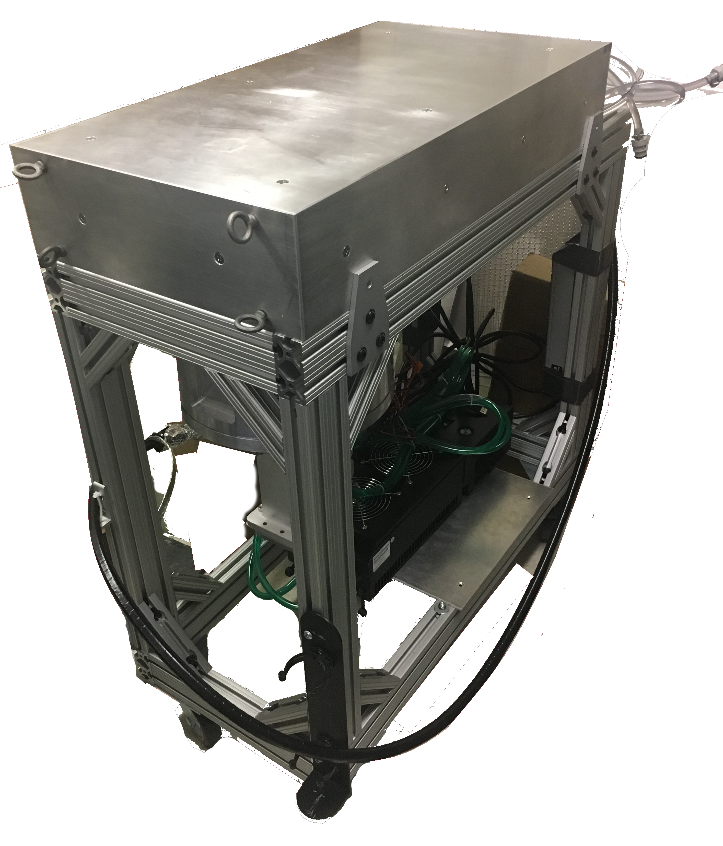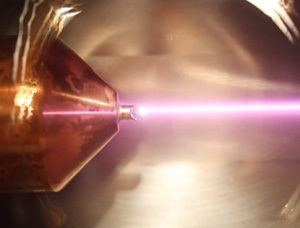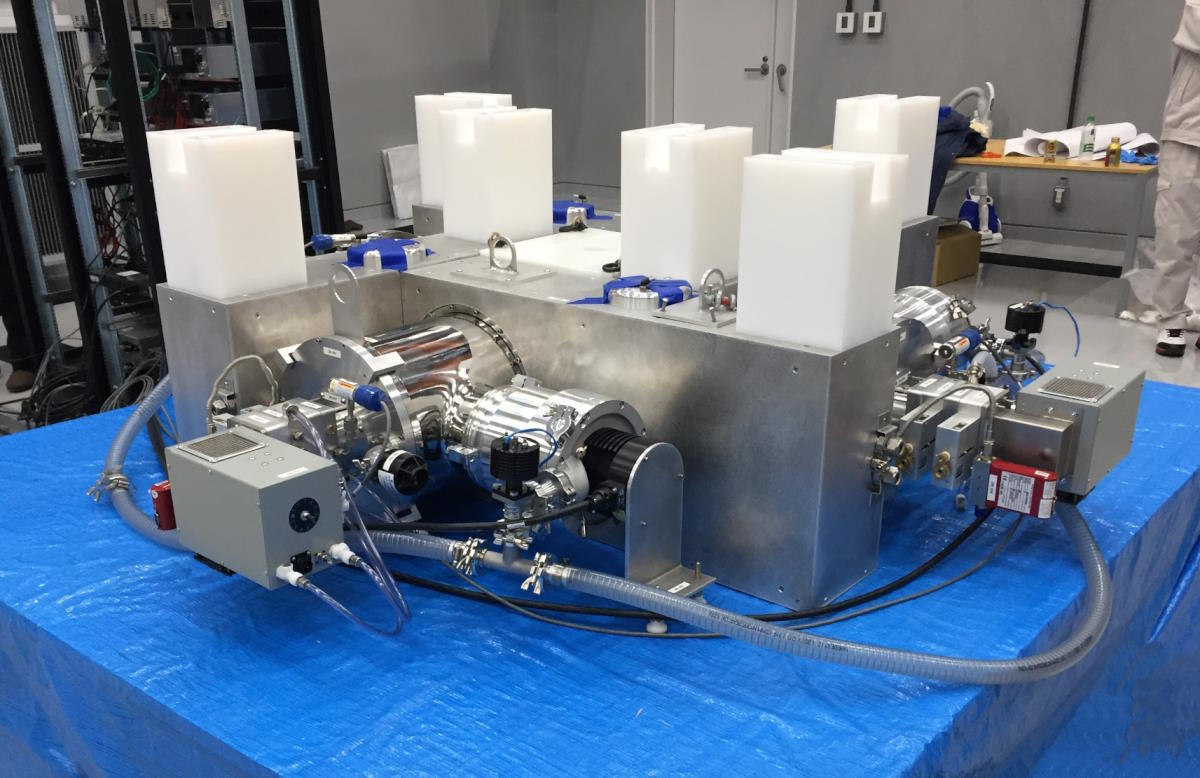Thermal Neutron Generator Products
The table, below, lists our standard products. It is very common for Adelphi to tailor generators to a customer’s needs, for example by excluding or minimizing certain material elements from a design, or modifying the shape of a design to fit into an existing set-up (see some examples). Also, Custom shielding, tailored to your specific needs, is also available.
| Generator | Type and model number(s) | Specifications |
|---|---|---|

|
Thermal, internal
target,
actively pumped
|
|
 |
Thermal, internal
target, actively pumped
|
|
Definitions of some of the terms used in the table
- The Deuterium-Tritium (D-T) reaction leads to neutrons with energy 14.1 MeV
- The Deuterium-Deuterium (D-D) reaction leads to neutrons with energy 2.45 MeV
- Thermal neutrons are made by moderating neutrons from the D-D reaction, thermal neutrons have energy 0.025eV (=kT where k is Boltzman’s constant and T is the temperature in Kelvin).
- An internal target denotes the neutron emission location is within the body of the neutron generator
- A surface target denotes the case where the neutron emission spot is on the exterior surface of the generator
- An actively pumped neutron generator (also known as an “open system”), is continuously pumped using a turbomolecular pump. Deuterium gas is supplied via a gas bottle (typically a small lecture bottle). This can be replaced by the user when necessary. On a10^8 n/s generator a small lecture bottle lasts 800 hours of operation, for a 10^10n/s generator small a lecture bottle lasts 160 hours of operation. A larger bottle can be used to reduce the regularity with which the bottle must be replaced.
- A sealed neutron generator has the gas pre-loaded within the generator. This may need to be re-loaded which can be done by returning the generator head to Adelphi where the generator will be pumped out and reloaded with gas, nominally, this needs to be done after 1,000 hours of operation but since tritium has a half-life of 12.33 years, after several years, even if not used, the generator will need to be re-loaded.
- Neutrons are emitted from a spot on the metal target, the spot size is governed by the ion optics in the generator. For some imaging applications a small spot size is beneficial. Increasing the spot size for a given generator is typically straightforward and involves making modifications to the ion optics design. For the highest yield generators it is generally better to have a wider spot size to allow better target cooling.
- The yield is expressed in neutrons per second (n/s), and represents the total number of neutrons emitted from the generator. The yield is typically measured using a Bonner ball located at a known distance from the generator. The maximum yield of a given generator is dictated by several factors including the power rating of its high voltage power supply (HVPS). Several versions of the generators are available with yields up to the value stated in the table.
- The flux is expressed in neutrons per square centimeter per second (n/cm^2/sec). This is typically measured using gold or niobium activation foils. It is our practice to write D-D, D-T or Thermal after stating the flux to avoid confusion.
- OEM - Original Equipment Manufacturer
Adelphi's product naming system
Adelphi product nomenclature: (DD/DT)XXX.Yzzz
- DD/DT corresponds to the gas used, Deuterium-Deuterium (D-D) or Deuterium-Tritium (D-T)
- “XXX” denotes the closest order or magnitude yield (108=> 10^8, 109=>109 n/s, 110=>1010).
- “Y” gives the power rating of the power supply, scaled to the closest factor of yield, so a 109.4=>4x109 n/s theoretical yield. The actual yield is sometimes a little different. The stated yield values in the table derive from measurements.
- “zzz” can be:
- “-M” = moderator built in
- “-API” = target with Associated Particle Imaging window, the window has variants sapphire, fiberoptic faceplate and there are different available scintillators, a common one being Cerium-doped Yttrium Aluminum Phospate (YAP:Ce)
- “s” = sealed
- “g” = grounded target, which is the same as 'surface target' bacause the target must be at electrical ground to be on the surface of the generator
- “e” = extended length
- “i” = imaging (small spot size)


